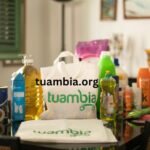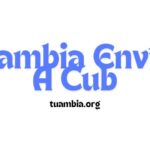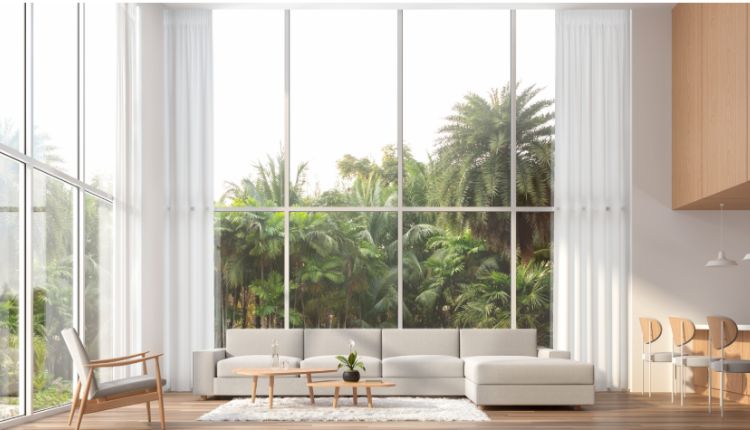The pandemic changed everything about how we think about home. Suddenly, that downtown condo with no balcony felt more like a prison than a palace. Decisions about real estate have shifted from prioritizing location above all else to focusing on lifestyle, with outdoor access now considered the ultimate status symbol. However, many overlook the fact that a home labeled with “mountain views” is no guarantee that you’ll truly embrace the outdoor lifestyle you desire.
Understanding that outdoor-centric living has become a primary driver in real estate decisions is just the beginning—the real challenge lies in identifying which specific outdoor lifestyle aligns with your passions and daily activities. Let’s break down the distinct categories of outdoor living that should guide your property search strategy.
Essential Outdoor Lifestyle Categories for Real Estate Buyers
Different outdoor enthusiasts need completely different property features and locations. What works for a weekend warrior won’t suit someone planning backcountry expeditions every month.
Adventure Sports Enthusiasts and Mountain Luxury Homes
For adventure seekers, mountain luxury homes are about so much more than prestige—they provide the necessary proximity to your outdoor playground. Approximately 25% of people globally were diagnosed with depression and anxiety in 2020, making access to stress-relieving outdoor activities more crucial than ever.
Ski resorts within an hour’s drive can make or break your winter season. Climbing areas and mountain biking trails should be accessible year-round, not just during perfect weather windows. Your property needs gear storage that actually works—think climate-controlled spaces for expensive equipment and washing stations for muddy boots.
Water Sports and Lake Community Living
Waterfront properties come with hidden complications most buyers never consider. Dock permits can take years to secure, and boat storage costs add up quickly. Some lakes restrict motorized watercraft or limit usage hours.
Year-round water access matters more than you’d think. That perfect summer lake house becomes pretty lonely when it’s frozen solid for four months.
Backcountry and Wilderness Lovers
Outdoor lifestyle properties for wilderness enthusiasts require different considerations entirely. Public land adjacency isn’t guaranteed forever—development can cut off trail access without warning. Off-grid capabilities become essential when you’re miles from the nearest power line.
Wildlife corridors and conservation easements protect your investment while preserving the wild spaces that drew you there initially.
Now that you’ve identified your outdoor lifestyle category, the next critical decision involves choosing the right geographic location that can sustainably support your chosen activities year-round. The emergence of the new mountain west as the epicenter for outdoor lifestyle real estate is providing adventure-focused buyers with unprecedented opportunities in certain markets.
Geographic Hotspots in the New Mountain West for Outdoor Living
The western United States is experiencing a real estate revolution driven by outdoor recreation access. Some markets are exploding while others remain surprisingly affordable.
Teton Valley Idaho Real Estate Market Analysis
In Teton Valley Idaho real estate, buyers find year-round recreation ranging from world-class skiing to summer hiking and mountain biking, all at prices more accessible than Jackson Hole, its famous neighbor. Infrastructure development continues to expand while maintaining the area’s wilderness character. Investment potential for luxury mountain retreats remains strong as more professionals discover they can work remotely from paradise.
Emerging Outdoor Recreation Destinations
Conway, SC, is the #1 city earning way more moves in than out in 2025 so far, wooing 4X the number of inbound movers as those seeking to leave. Under-the-radar markets often provide the best long-term value for outdoor enthusiasts.
Climate change considerations affect different regions differently. Some traditional winter sports areas face shorter seasons, while others benefit from extended shoulder seasons for hiking and biking.
Established vs. Developing Mountain Communities
Established communities offer proven amenities and outdoor outfitter ecosystems. Property appreciation tends to be steadier but potentially slower than in emerging markets. Community culture in established areas often welcomes newcomers who share outdoor values.
Developing communities present a higher risk but potentially greater rewards. Seasonal resident dynamics can make or break your long-term satisfaction with an area.
While prime locations like Teton Valley offer incredible potential, even the most desirable outdoor recreation destinations can harbor properties that fail to deliver on their lifestyle promises. Developing a systematic approach to evaluate each property’s true outdoor compatibility will save you from costly mistakes and ensure your investment supports rather than limits your adventures.
Property Evaluation Framework for Outdoor Lifestyle Compatibility
Not all properties in outdoor recreation areas provide good outdoor access. You need a systematic approach to separate marketing hype from reality.
Terrain and Topography Assessment Strategies
Microclimate variations can create dramatically different conditions within a few miles. South-facing slopes melt out weeks earlier than north-facing ones. Natural hazard considerations include avalanche zones, flood plains, and wildfire risk.
Building site optimization affects everything from morning sun exposure to wind protection. Some properties look perfect on paper but prove miserable to live in.
Infrastructure and Utility Considerations
High-speed internet isn’t optional anymore—remote work flexibility depends on reliable connectivity. Renewable energy potential reduces long-term costs while supporting sustainability goals.
Road maintenance and seasonal access reliability determine whether you can reach your property year-round. Private roads often mean shared maintenance costs and potential disputes.
Legal and Regulatory Factors
HOA restrictions can prevent outdoor equipment storage or property modifications you need for your lifestyle. Permitting requirements for outdoor improvements vary wildly between jurisdictions. Water rights and usage limitations become critical in arid western regions where outdoor irrigation demands compete with municipal supplies.
Beyond traditional location and terrain assessments, today’s outdoor lifestyle properties are being transformed by cutting-edge features that seamlessly integrate adventure-ready functionality with luxury living. These innovative property modifications are redefining what it means to live an outdoor-centric lifestyle from your backyard.
Innovative Property Features Transforming Outdoor Lifestyle Real Estate
Smart technology and thoughtful design can transform any property into an adventure basecamp. The key is matching features to your specific outdoor interests.
Smart Home Integration for Outdoor Enthusiasts
Weather monitoring systems provide real-time avalanche and fire alerts directly to your phone. Automated irrigation keeps outdoor living spaces green without constant attention.
Equipment charging stations handle everything from e-bike batteries to avalanche beacons. Climate-controlled storage protects expensive gear from temperature extremes and humidity.
Multi-Seasonal Outdoor Living Designs
Retractable outdoor room enclosures extend your living season by months. Geothermal heating makes outdoor spaces comfortable even during shoulder seasons.
Year-round growing systems and greenhouses provide fresh food regardless of the weather. These features pay for themselves through reduced grocery costs and improved nutrition.
Adventure-Ready Property Modifications
Helicopter pads and private airstrip considerations sound extreme, but make sense for serious backcountry access. Equipment washing and maintenance facilities keep your gear in top condition.
Guest accommodations for outdoor adventure groups turn your property into a destination for friends and family who share your passions.
While smart home integration and adventure-ready modifications can significantly support your outdoor lifestyle, they also represent substantial financial considerations that extend far beyond the initial purchase price. Understanding the complete financial picture of outdoor lifestyle property ownership is essential for making a sustainable long-term investment.
Financial Planning for Outdoor Lifestyle Properties
The sticker price is just the beginning when it comes to outdoor property ownership. Hidden costs and unexpected opportunities can make or break your budget.
Total Cost of Ownership Beyond Purchase Price
Seasonal maintenance and winterization expenses add thousands annually in mountain regions. Equipment storage and security considerations require ongoing investment.
Property management for part-time residents ensures your investment stays protected when you’re not there. Remote monitoring systems catch problems before they become disasters.
Investment Potential and Rental Income Opportunities
Short-term rental regulations in outdoor recreation areas change frequently and affect profitability. Seasonal demand patterns create feast-or-famine income cycles.
Property appreciation factors specific to outdoor markets include trail access, resort development, and climate change impacts on traditional activities.
Insurance and Risk Management
Specialized coverage for outdoor lifestyle properties costs more but provides essential protection. Natural disaster and climate change risk assessment affects both premiums and coverage availability.
Liability considerations for on-property outdoor activities require additional coverage that most homeowners never consider.
Financial planning provides the foundation for your outdoor lifestyle investment, but true satisfaction comes from how well you integrate into the local outdoor recreation community and culture. The strength of local outdoor infrastructure and community connections often determines whether your property becomes a launching pad for adventures or an isolated retreat.
Community and Lifestyle Integration Factors
The best property in the world won’t make you happy if you can’t connect with like-minded people and local outdoor resources.
Local Outdoor Recreation Culture Assessment
Guide and outfitter relationships provide access to local knowledge and specialized equipment. Equipment rental and repair services availability saves money and storage space.
Seasonal event calendars and community engagement opportunities help you build connections with neighbors who share your interests.
Healthcare and Emergency Services Access
Proximity to trauma centers and helicopter rescue becomes critical when you’re pursuing high-risk activities in remote areas. Altitude and environmental health considerations affect some people more than others.
Specialist outdoor sports medicine availability can mean the difference between quick recovery and long-term limitations after injuries.
Educational and Family Considerations
Outdoor education programs and schools ensure your children develop similar values and skills. Youth sports and activity leagues provide social connections for the whole family.
Seasonal population impacts on services create challenges in some resort communities where infrastructure struggles to keep up with peak demand.
Strong community ties and local outdoor culture create immediate lifestyle benefits, yet the long-term value of your investment depends on how well your property can adapt to changing environmental and technological conditions. Future-proofing your outdoor lifestyle investment requires strategic planning for the challenges and opportunities ahead.
Future-Proofing Your Outdoor Lifestyle Investment
Climate change and technology will reshape outdoor recreation over the next decades. Properties that adapt will maintain value while others become obsolete.
Climate Change Adaptation Strategies
Shifting seasonal patterns affect everything from skiing to hiking to water sports. Water availability and drought resistance determine long-term livability in many western regions.
Wildfire risk mitigation and defensible space requirements are becoming standard in many mountain communities.
Technology Integration and Remote Connectivity
Starlink and satellite internet developments are opening previously impossible locations for remote work. Electric vehicle charging infrastructure affects property accessibility as gas stations become less common.
Drone regulations and airspace considerations may limit some recreational activities while creating new opportunities.
Sustainable Outdoor Living Practices
Regular engagement in outdoor adventure activities can foster long-term EWB [Eudaimonic Well-Being]. Leave No Trace property development principles ensure your investment doesn’t damage the environment that makes it valuable.
Renewable energy systems for off-grid properties reduce costs while improving reliability. Conservation partnership opportunities can provide tax benefits while protecting surrounding wild spaces. As climate change and technology continue reshaping outdoor recreation opportunities, staying ahead of these trends will protect and improve your investment’s value over the decades.
Final Thoughts on Outdoor Lifestyle Real Estate
Finding a property that truly matches your outdoor way of life requires looking beyond pretty views to consider access, community, and long-term sustainability. Those searching in the new mountain west will find incredible opportunities, provided they do their homework and think strategically about their investment.
Whether you’re seeking luxury mountain retreats or practical adventure basecamps, the key is matching property features to your specific outdoor passions rather than settling for generic “outdoor lifestyle” marketing. Your perfect outdoor home is out there, it just takes patience and careful evaluation to find it.
Your Outdoor Lifestyle Real Estate Questions Answered
Where do Outdoorsy people live?
Corona, California. With the Cleveland National Forest and the Santa Ana Mountains to the southwest, Corona has no shortage of nearby hikes. Take Coal Canyon Trail to an area known by locals as “Mini Moab,” or climb up Skyline Drive for sweeping views of the mountains.
What’s the difference between mountain luxury homes and regular mountain properties for outdoor enthusiasts?
While both types of properties cater to those who love the mountains, mountain luxury homes come equipped with upscale features such as heated gear storage, equipment washing stations, and direct trail access. In contrast, regular mountain properties might only have basic amenities and less convenient outdoor access.






